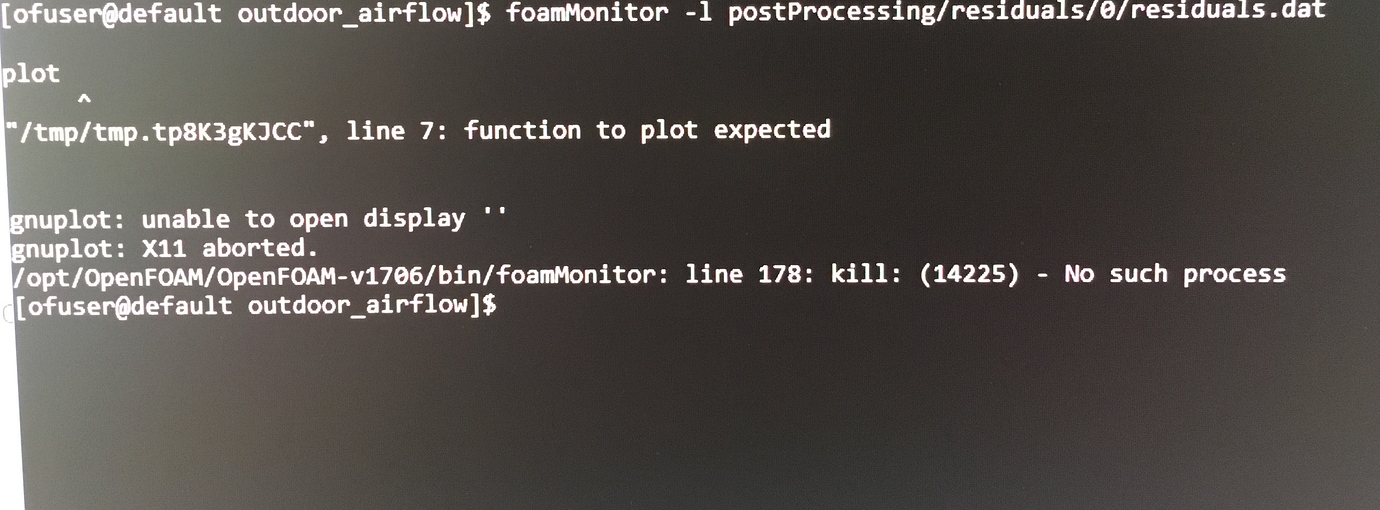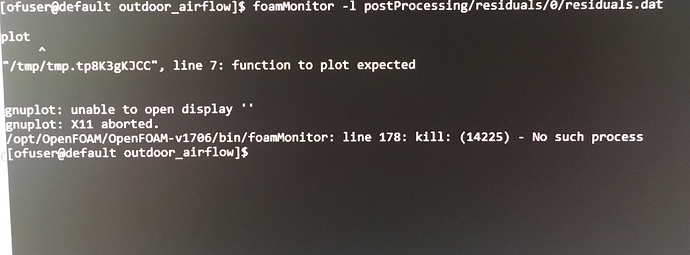
- GNUPLOT UNABLE TO OPEN DISPLAY GNUPLOT X11 ABORTED INSTALL
- GNUPLOT UNABLE TO OPEN DISPLAY GNUPLOT X11 ABORTED FULL
- GNUPLOT UNABLE TO OPEN DISPLAY GNUPLOT X11 ABORTED ANDROID
- GNUPLOT UNABLE TO OPEN DISPLAY GNUPLOT X11 ABORTED PASSWORD
GNUPLOT UNABLE TO OPEN DISPLAY GNUPLOT X11 ABORTED PASSWORD
You will be prompted for password that you entered on first launch of 'vncserver'.
GNUPLOT UNABLE TO OPEN DISPLAY GNUPLOT X11 ABORTED ANDROID
Here will be assumed that you use this Android VNC client: VNC Viewer (developed by RealVNC Limited).ġ. You may even put this variable to your bashrc or profile so you don't have to always set it manually unless display address will be changed. Finally, to make programs do graphical output to the display 'localhost:1', set environment variable like shown here (yes, without specifying 'localhost'): It means that X (vnc) server is available on display 'localhost:1'.Ĥ. Log file is /data/data/com.termux/files/home/.vnc/localhost:1.log

Starting applications specified in /data/data/com.termux/files/home/.vnc/xstartup New 'localhost:1 ()' desktop is localhost:1Ĭreating default startup script /data/data/com.termux/files/home/.vnc/xstartupĬreating default config /data/data/com.termux/files/home/.vnc/config

If everything is okay, you will see this message: Note that passwords are not visible when you are typing them and maximal password length is 8 characters.ģ. Would you like to enter a view-only password (y/n)? n You will require a password to access your desktops. If you decided to use VNC for graphical output, follow these instructions for properly setting up VNC server.Īt first time, you will be prompted for setting up passwords: To disable this repository, you need to uninstall package x11-repo. It will automatically add appropriate sources.list file and PGP key. You can enable it by running the following command: Mmap2(NULL, 8192, PROT_READ|PROT_WRITE, MAP_PRIVATE|MAP_ANONYMOUS, -1, 0) = 0xb77bd000Īccess("/etc/ld.so.X11 packages are available in a separate APT repository. Output of strace xterm is following: # strace xtermĮxecve("/usr/bin/xterm",, ) = 0Īccess("/etc/ld.so.nohwcap", F_OK) = -1 ENOENT (No such file or directory) Īs seen above, there are no Unix domain sockets there. Output of /tmp/.X11-unix/ directory on remote machine can be seen below: # ls -la /tmp/.X11-unix/ĭrwxrwxrwt 4 root root 80 Jan 13 09:17. SSH server version is OpenSSH_5.9p1 and SSH client version is OpenSSH_5.2p1.

I tried to find some useful log entries both on machine where SSH server is running and machine where SSH client is running with find /var/log/ -mmin -5 -type f command, but this did not give any hints.

X forwarding doesn't use xhost so at least this can be excluded. Program as a non-root user or by removing the suid bit on the executable. You may get a more descriptive message by running the
GNUPLOT UNABLE TO OPEN DISPLAY GNUPLOT X11 ABORTED FULL
The full text of the error or warning message cannot be safely formatted Warning: This program is an suid-root program or is being run by the root user. (wireshark:10083): Gtk-WARNING **: cannot open display: localhost:11.0 However, X clients on remote machine do not start properly: # wireshark
GNUPLOT UNABLE TO OPEN DISPLAY GNUPLOT X11 ABORTED INSTALL
In addition, it creates the $DISPLAY variable which points to this proxy and calls the xauth to install a proxy key which authenticates to this X-server proxy on remote machine: # echo "$DISPLAY"Ī58/unix:11 MIT-MAGIC-COOKIE-1 39324086672d1ae35e373476c3891a77 On local machine, I have started SSH client with -X flag which instructs the SSH server, running on remote machine, to set up a X-server proxy. I have enabled X forwarding on remote machine where SSH server is running: # grep -i forward /etc/ssh/sshd_config


 0 kommentar(er)
0 kommentar(er)
